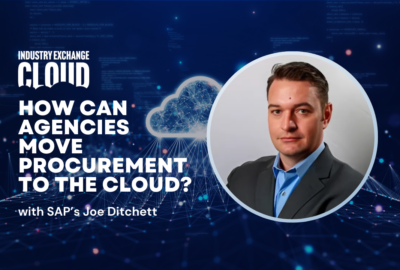DoD Cloud Exchange 2024: Army’s Rob Schadey on applying rigor to gain cloud efficiencies
PEO EIS is shifting to agile software development, applying rigor of FinOps, while also making sure cybersecurity is top of mind.
The Army’s Program Executive Office for Enterprise Information Systems is embracing agile software development and delivery in the cloud.
Through the move, Rob Schadey, acting deputy program executive officer at EIS, said his office is shifting many software systems that were previously under the Army’s defense business systems policy into the service’s software pathway policy.
That includes the Global Force Information Management System, ArmyIgnitED, Army Contracting Writing System and several others, Schadey said during Federal News Network’s DoD Cloud Exchange 2024.
“We’re beginning with the flexibilities of software development from an agile perspective,” Schadey said.
The Army earlier this month announced a new policy for software development focused on iterative development and close coordination with users.
Agile software development typically relies on the power of cloud computing. And while there are many approaches to agile development, Schadey said PEO EIS ultimately settled on using the Scaled Agile Framework, or SAFe, method.
“It allows us to deliver capability through agile release trains and program increment, or PI, planning in coordination and cooperation with our customers,” he said.
PEOEIS can incorporate the user and the user experience consistently into software builds, rather than playing a guessing game, as Schadey put it, that comes with traditional waterfall software development.
“More often than not, you’re really focused on the integrated master schedule itself and trying to hit a date, whereas in agile, there’s flexibility there to work with the customer to hit on capability delivery and progress over two-week sprints,” he said. “So instead of playing the guessing game with a date, we’re getting more concrete with delivery of software by leveraging agile SAFe and working with our customer and functional [commands] on the capability and delivery needs that they have.”
FinOps ‘rigor’ key to cloud savings
For the last several years, PEO EIS has also fine-tuned a financial operations practice aimed at maximizing the cost savings opportunities of moving systems and data into the cloud.
Schadey said a team of three people working on FinOps has achieved an $18 million cost avoidance over the last four years.
“That includes leveraging the cost savings plans, modifying storage types, supporting automated patching and catching misconfigurations or inaccurate scripts,” he said. “So an $18 million buy-down to bend the curve over four years to me is a great return on investment. And it really shows that if you put the right rigor and you get the right team in place, you can really identify cost savings to be plugged into other places.”
The Army is also eyeing opportunities to take advantage of the Joint Warfighting Cloud Capability (JWCC) contract. But Schadey said, so far, the contract doesn’t have enough volume to keep costs down.
“We’ve done the cost comparisons, and we’re just not at that point where we could transition because it would actually increase the cost to the Army, based off of those cost differences and volumes that we’ve got in place,” he said. “At some point, it will make absolute sense to help drive down those costs on the next contract vehicle that the Defense Information Systems Agency and JWCC work to put into place.”
Keeping cloud cybersecurity a priority
Schadey also emphasized the importance of maintaining cybersecurity in the cloud and understanding the shared services model that customers enter when they move data to the cloud .
The Army’s recent shift to software as a service includes partnering with industry to receive audit logs and other cyber capabilities from cloud providers, he said.
PEO EIS is also working on a new capability, called Neighborhood Watch, to advance cloud cybersecurity.
“That very much will be a capability where we’re consolidating and collapsing to a security information/event management capability and solution,” Schadey said. “We are working to put that in place within the cloud. And we will apply the same financial operations rigor because it will be in the cloud.”
Although logging capabilities can drive up storage costs, he said it’s not always about saving money.
“Not everything that’s done from a cloud perspective is done with the intent to drive down costs,” Schadey said. “It’s there to enable efficiencies and automations and tap into the services that cloud can offer. And in this scenario, we will be able to enable machine learning and other things over those datasets to help us get better details and logs with the threats that we’re up against.”
Discover more articles and videos now on Federal News Network’s DoD Cloud Exchange event page.
Copyright © 2024 Federal News Network. All rights reserved. This website is not intended for users located within the European Economic Area.
Follow @jdoubledayWFED






